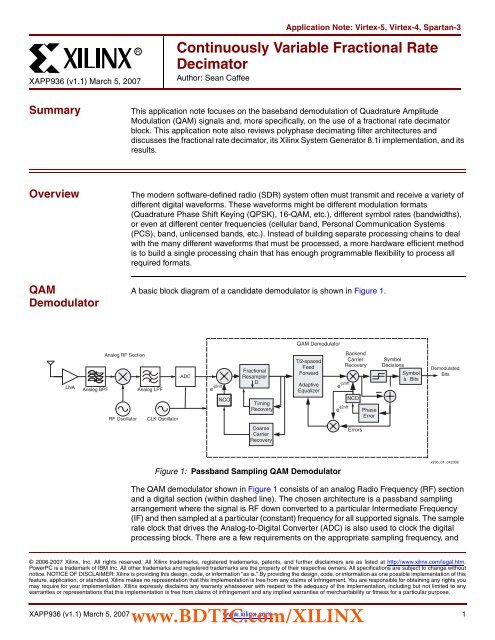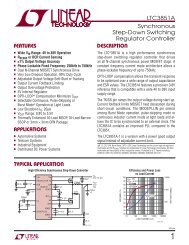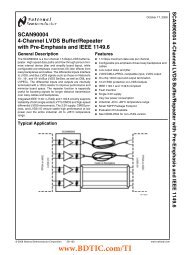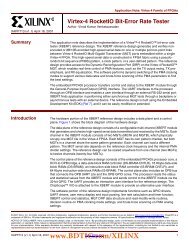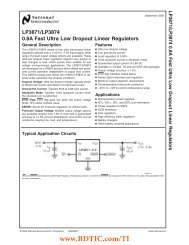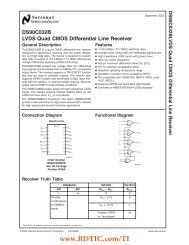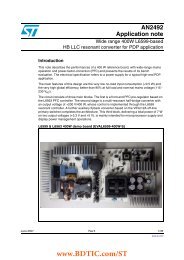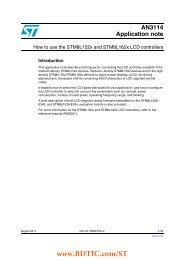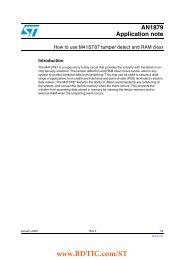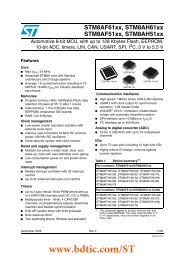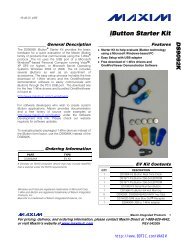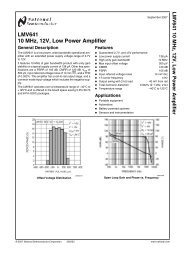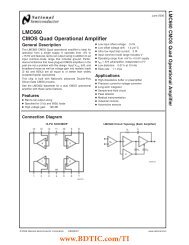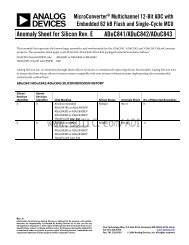XAPP936, Continuously Variable Fractional Rate Decimator
XAPP936, Continuously Variable Fractional Rate Decimator
XAPP936, Continuously Variable Fractional Rate Decimator
You also want an ePaper? Increase the reach of your titles
YUMPU automatically turns print PDFs into web optimized ePapers that Google loves.
Polyphase Decimating Filter ArchitecturesRSystem Generator is a DSP design entry tool that works in conjunction with The MathworksMATLAB® and Simulink® tools. System Generator accelerates the entry, simulation, andimplementation of DSP designs by abstracting away many of the details of the low-level FPGAdesign, while still giving the designer control over the implementation to ensure highperformance and low resource usage. After a design is entered and simulated using SystemGenerator, a bit and cycle accurate implementation (VHDL or Verilog) can be generatedautomatically by clicking a button on the GUI. Complex DSP designs can be designed andimplemented in hours or days instead of weeks or months using alternative designmethodologies.Sine wavetest inputInstruments to observe signalsand performanceL valueinputResampler designunder testFigure 8: Top-Level System Generator TestbenchFigure 8 is the top-level design that contains the design under test (the decimator) and the inputsources and output instrumentation of the testbench. The L value input is analogous to thedesired decimation rate and is described in more detail in a few paragraphs below.Figure 9 shows the top-level of the fractional decimator design, which consists of an addressgenerator and a filter block. The small amount of logic (blue blocks) that are not contained inthese two blocks simply changes the address generator output from an up counter to a downcounter (it was more efficient to turn an up counter into a down counter than to start with a downcounter).The input and output signals that have Gateway blocks on them (yellow rectangles) translateinto ports (or pins if the design is the top-level FPGA design) on the generated output design.The Gateway blocks translate between the floating point simulation environment of Simulink(testbench) and the fixed-point implementation environment of System Generator anddelineate the portion of the design that will be implemented in an FPGA.The output signals in Figure 9 that do not have Gateway blocks on them are simply internalsignals provided for debug and observation and do not turn into ports or pins on the generatedoutput design.www.BDTIC.com/XILINX<strong>XAPP936</strong> (v1.1) March 5, 2007 www.xilinx.com 6
Polyphase Decimating Filter ArchitecturesRFigure 11 shows the overall filter block, which is made up of four two-tap blocks and someindividual registers and gates (blue blocks).Two-tap blocksmake up 8-tapfilter sectionFigure 11: Filter BlockFigure 12 shows the detail of the two-tap block. This block consists of two single-port RAMsthat store the coefficients, a multiplier and accumulator for each tap, and an adder chain alongthe bottom of the diagram. A single-port RAM block for each tap initialized with the filtercoefficients (1) can supply each multiplier with the proper coefficient. The accumulatoraccumulates multiplier outputs for D (the decimation rate) cycles. Because D can be afractional number, the actual number of cycles can be higher or lower than D, but will averageout to D. Every component is clocked at the input rate (high rate) except for the capture registerin the accumulator and the adder chain, which are clock enabled at the decimated rate.The entire design utilizes a single fast, input sample rate clock, and outputs decimated samplesalong with a clock enable (valid output) to indicate which samples should be used for follow onprocessing.1. Coefficient values and other parameters are initialized in the InitFcn callback under Model Properties. The filterused can be any 1024 tap low pass filter that has a passband out to 2/128 of the input sampling rate. Using normalMATLAB normalized cut-off frequencies, the filter cutoff would be 1/128.www.BDTIC.com/XILINX<strong>XAPP936</strong> (v1.1) March 5, 2007 www.xilinx.com 8


